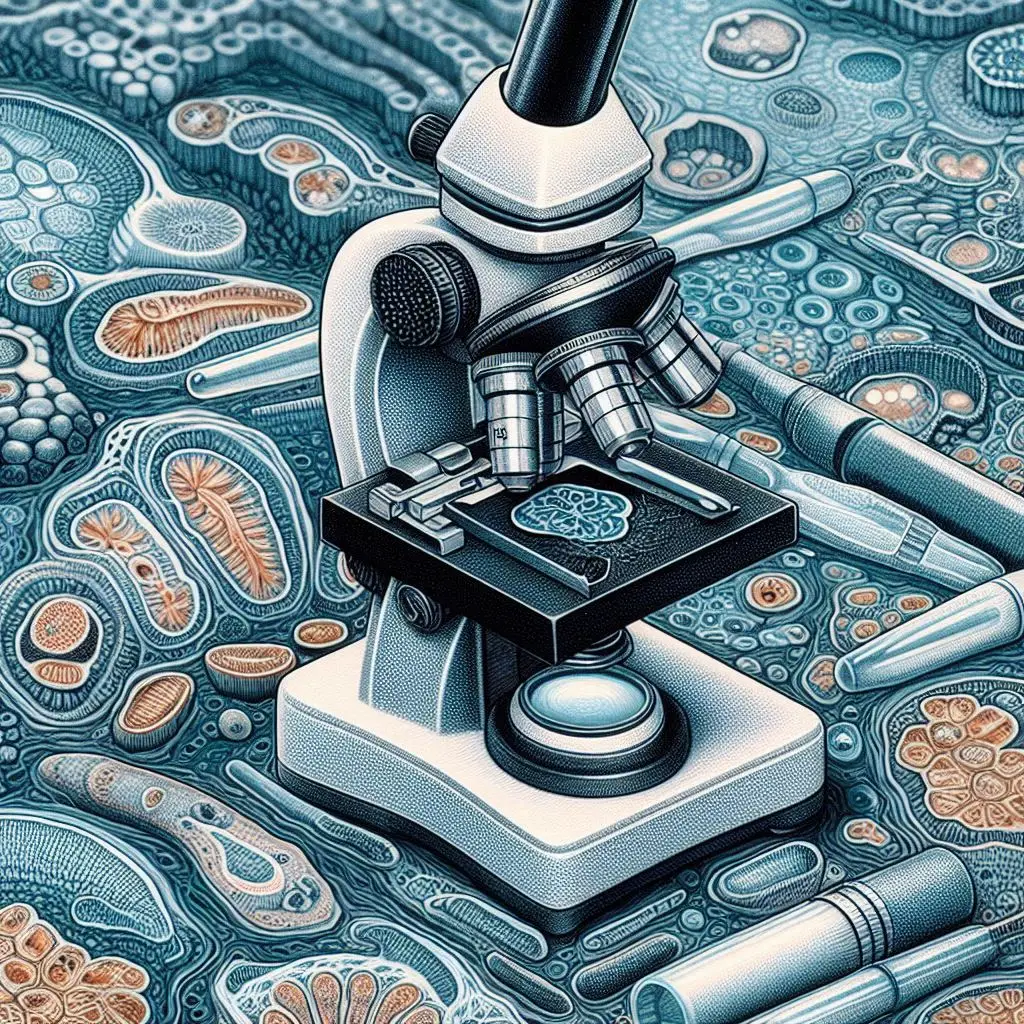Understanding Histology and Histological Techniques

Introduction to Histology
Histology is the scientific study of tissues at the microscopic level. It provides insights into the structure and function of various tissues in the body. Understanding histology is crucial for diagnosing diseases, researching biological processes, and advancing medical science.
The Importance of Histology
Histology plays a vital role in many fields, including medicine, biology, and pathology. It helps scientists and medical professionals:
- Diagnose Diseases: Histological examination can reveal abnormalities in tissue structure, indicating diseases such as cancer.
- Understand Biological Processes: By studying tissues, researchers can learn how different systems in the body interact and function.
- Develop Treatments: Knowledge gained from histological studies can lead to the development of new therapies and drugs.
Histological Techniques
Histological techniques involve several steps to prepare tissue samples for examination. Each step is crucial for obtaining accurate and reliable results.
1. Sample Collection
The first step in histology is collecting tissue samples. This can be done through various methods, including:
- Biopsy: A small sample is taken from a living organism.
- Surgical Resection: A larger portion of tissue is removed during surgery.
2. Fixation
After collection, the tissue sample needs fixation. Fixation preserves the tissue’s structure and prevents degradation. Common fixatives include:
- Formalin: A widely used fixative that preserves tissue morphology.
- Glutaraldehyde: Often used for electron microscopy due to its superior preservation of ultrastructure.
3. Dehydration
Once fixed, the tissue must be dehydrated. This process removes water from the tissue, making it easier to embed in paraffin wax. Dehydration typically involves:
- Ethanol Solutions: Gradually increasing concentrations of ethanol are used to remove water.
4. Embedding
After dehydration, the tissue is embedded in a solid medium, usually paraffin wax. This step provides support for thin sectioning. The embedding process includes:
- Infiltration: The tissue is placed in melted paraffin to allow it to permeate the sample.
- Cooling: The paraffin is cooled to solidify around the tissue.
5. Sectioning
Sectioning involves cutting the embedded tissue into thin slices, typically 5-10 micrometers thick. This is done using a microtome, a specialized cutting instrument. The thin sections allow light to pass through, enabling microscopic examination.
6. Staining
Staining enhances the visibility of tissue structures under a microscope. Different stains highlight various components of the tissue. Common stains include:
- Hematoxylin and Eosin (H&E): The most widely used stain in histology. Hematoxylin stains nuclei blue, while eosin stains cytoplasm pink.
- Special Stains: Stains like Masson’s trichrome or periodic acid-Schiff (PAS) target specific tissue components.
7. Mounting
Once stained, the tissue sections are mounted on glass slides. A coverslip is placed over the section to protect it and facilitate viewing under a microscope.
8. Examination
The final step is examining the prepared slides under a microscope. Histologists look for abnormalities in tissue structure, which can indicate diseases. Advanced imaging techniques, such as fluorescence microscopy, can provide additional insights.
Applications of Histology
Histology has numerous applications in various fields:
1. Clinical Diagnosis
Histology is crucial in diagnosing diseases, especially cancer. Pathologists examine tissue samples to identify malignant cells and determine the type and stage of cancer. This information guides treatment decisions.
2. Research
Histological techniques are essential in biological research. Scientists study tissue samples to understand developmental processes, disease mechanisms, and the effects of drugs on tissues.
3. Education
Histology is a fundamental subject in medical and biological education. Students learn about tissue structure and function, which forms the basis for understanding anatomy and physiology.
4. Forensic Science
Histology can also play a role in forensic investigations. Pathologists analyze tissue samples from crime scenes to determine causes of death or identify victims.
Advances in Histological Techniques
Recent advancements in histological techniques have improved the accuracy and efficiency of tissue analysis. Some notable developments include:
1. Digital Pathology
Digital pathology involves scanning histological slides to create high-resolution digital images. This technology allows for remote analysis and collaboration among pathologists.
2. Immunohistochemistry (IHC)
IHC is a technique that uses antibodies to detect specific proteins in tissue samples. This method provides valuable information about the presence and distribution of biomarkers associated with diseases.
3. In Situ Hybridization (ISH)
ISH allows researchers to detect specific RNA or DNA sequences within tissue sections. This technique is useful for studying gene expression in various conditions.
4. 3D Histology
Three-dimensional histology involves reconstructing tissue samples into 3D models. This approach provides a more comprehensive view of tissue architecture and organization.
Challenges in Histology
Despite its importance, histology faces several challenges:
1. Sample Quality
The quality of tissue samples can significantly impact histological analysis. Poorly preserved samples may lead to inaccurate diagnoses.
2. Interpretation Variability
Histological interpretation can vary among pathologists. Subjectivity in identifying abnormalities can lead to discrepancies in diagnoses.
3. Technological Limitations
While advancements have improved histological techniques, some limitations remain. For example, traditional staining methods may not provide sufficient detail for certain analyses.
Conclusion
Histology is a vital field that enhances our understanding of tissue structure and function. The techniques involved in histological analysis are essential for diagnosing diseases, conducting research, and educating future scientists and medical professionals. As technology continues to advance, the future of histology looks promising, with new methods enhancing our ability to study tissues in greater detail.
For more pearls of Vets Wisdom:
https://wiseias.com/partitioning-of-food-energy-within-animals/






Responses